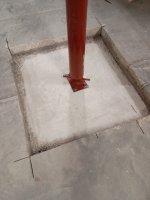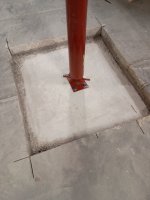I can't help myself...let's use your dimensions....30'x40'. allowing for 6" of liquid...1,036,800 cubic inches....4,488.3 gallonsSi. And does the pump have electricity? I can follow all that. A 8" drain pipe will only move so much water as will a 40 GPM pump.
But a 8" drain in a 30' x 40' x 10' tall room is still a 8" drain in a 30' x 40' x 9'6" tall room. Same for a 40 GPM pump.
The floor is the floor either way and 2 foot of water in a room with a 10 foot ceiling is still 2 foot of water in a room with a 9 1/2 foot ceiling. I've been stumped by simpler problems before so it's definitely not your fault if I don't understand. Maybe tequila will help.
Now, lift a safe 6" on a 30"x40" whatever. The room volume has now diminished by 6"x30"x40". 7200 cubic inches....31.2 gallons
The drain system won't even realize the diminished capacity of the room



